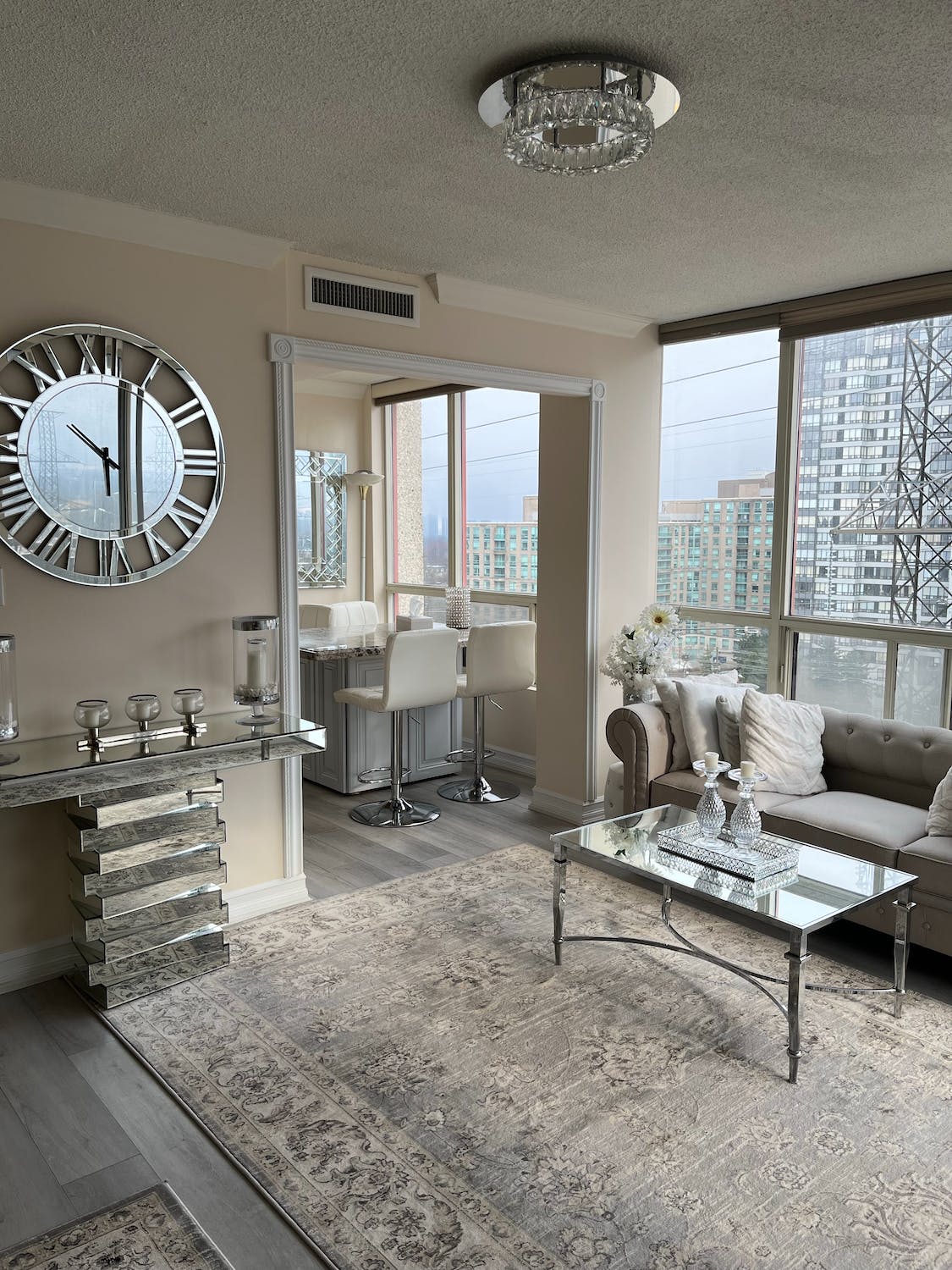Add a clock to the mantelpiece
If you have a mantelpiece in your living room, placing a clock in the center could make sense. This is one of the most traditional locations in a home to place a clock. Specialist timepieces called mantel clocks are built for this purpose - these are usually a semi-circular shape with a rectangular base. Traditional wooden mantel clocks are best suited for matching more traditional decor, whereas glass and acrylic mantel clocks work best in modern homes surrounded by contemporary furnishings.
Use large clocks on large empty walls
When it comes to wall clocks, the size of the clock should be determined by how large and empty the wall is. If it’s a small area of wall or there are lots of pictures or other wall ornaments, a smaller clock may be more suitable. If it’s a big empty wall, a larger clock is better. The exception is narrow corridors where you want to stick to small clocks, because you’re likely to be standing much closer to the wall when looking at them.
Experiment with alternative indices
Clock faces come in many different styles. The most basic clocks have Arabic numerals to pinpoint each hour. More traditional and formal clocks contain Roman numerals instead. This chart at UNRV.com delves more into Roman numerals. Of course, some clocks don’t have any numerals at all and simply have dots or lines. In fact, there are some clocks that don’t even have any indices, offering a minimal look that may be better for contrasting a busy or heavily textured wall.
Provide some rural charm with a rustic wooden clock
You can buy wooden clocks with visible grain lines and even clocks made from rough circular slices of tree. These are ideal for rustic farmhouse decor schemes and work best when paired with rustic wooden furniture of the same tone. Rustic wooden clocks can look great on exposed brick walls. When hanging a wooden clock on a wall with timber panels, try to choose a different wood tone to the panels behind them so that the clock stands out.
Add history with an antique clock
Clocks are one of the most common antiques for those that want to add a piece of history to their home. Historic clocks work best in historic homes, but can also be incorporated into modern homes to add character. Metal and wooden mantel clocks are some of the most common antique clocks. There’s also the option of more striking statement clocks like grandfather clocks or cuckoo clocks. You can visit antique stores to find these types of clocks or search for them online. Antique clocks in good condition will cost a lot of money, but can also gain value over time if well maintained. This antique clock guide at Invaluable.com offers more info.
Go modern with geometric designs
For a modern funky touch, say no to traditional circular clock faces. Square clocks and hexagonal clocks are great for hanging over a contemporary rectangular sofa or sideboard. You can also buy circular clocks with squares inside them or around them for a more subtle geometric look. Such clocks are often made from modern materials like glass, metal or acrylic and work well when paired with other synthetic textures.
Explore fun DIY options for kids’ bedrooms
Adding a clock to a kid’s bedroom can help teach them to tell the time. There are many clock designs aimed at kids that are great for a kids’ bedroom. One fun option to consider is a personalized DIY clock that you can color in or draw on. Kids are more likely to look at these clocks, because they had a part in designing how they look. This in turn encourages them to learn to tell the time.
Choose digital clocks in bedrooms
Digital clocks are often a better option in bedrooms for several reasons. Firstly, they don’t make a ticking noise like analog clocks, and so are less likely to keep people up at night. Secondly, you can more easily see them in the dark (although you can get glow-in-the-dark analog clocks). Digital clocks come in many different styles and can be placed in many different areas of the bedroom. The most popular location is the bedside cabinet where such clocks can be read at a glance. These clocks often have alarm clock settings. Visible clocks in bedrooms are not always a good idea and can encourage insomnia in some people.
Place clocks at eye level
There are many feng shui principles involving placement of clocks. One of the most important rules of thumb for maintaining a sense of harmony in a room is to place clocks at eye level. Placing a clock above a doorway or on a low shelf can look awkward and is best avoided. Instead, think about where your eye level is in a room so that you easily glance at a clock and tell the time. In hallways and kitchens, place clocks at eye level while standing. In a living room, think about eye level while sitting - mantelpieces, windowsills and sideboards are the best solutions in most cases.
Avoid clocks in dining rooms
There are some rooms like bathrooms where a clock doesn’t make sense. However, the room with the most negative energy (according to feng shui principles) is actually the dining room. While a lot of people place clocks on their dining room wall, such clocks can encourage guests to clockwatch while waiting for food and eating - which can make impatience more visible and lead to hurried meals. Avoiding clocks typically promotes a more peaceful and relaxed atmosphere in a dining room. Instead, decorate walls here with paintings or photos.




.png)



No comments
Thank you for dropping by! I would love to hear what you thought. :)
Thanks!
♥,
Diana